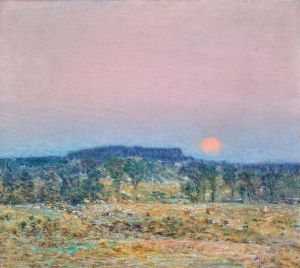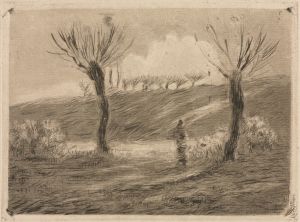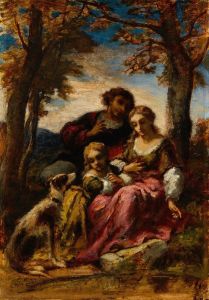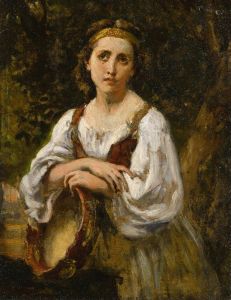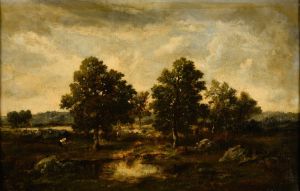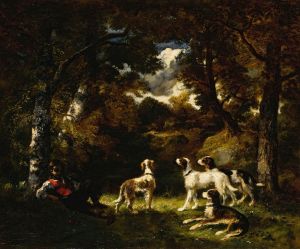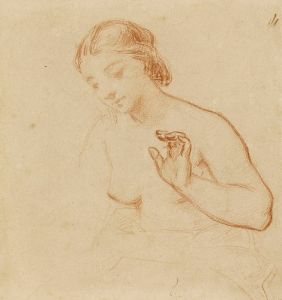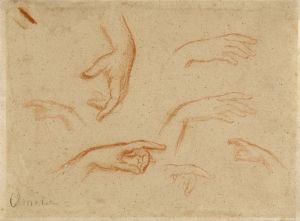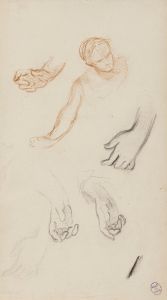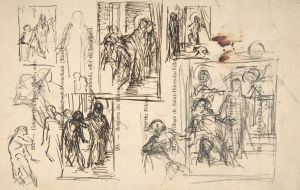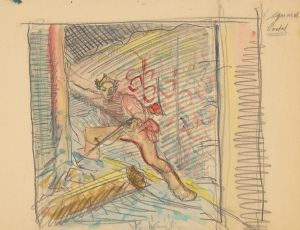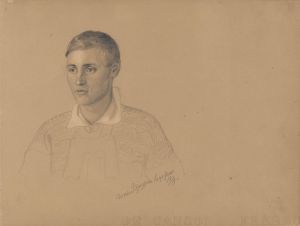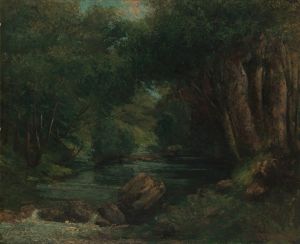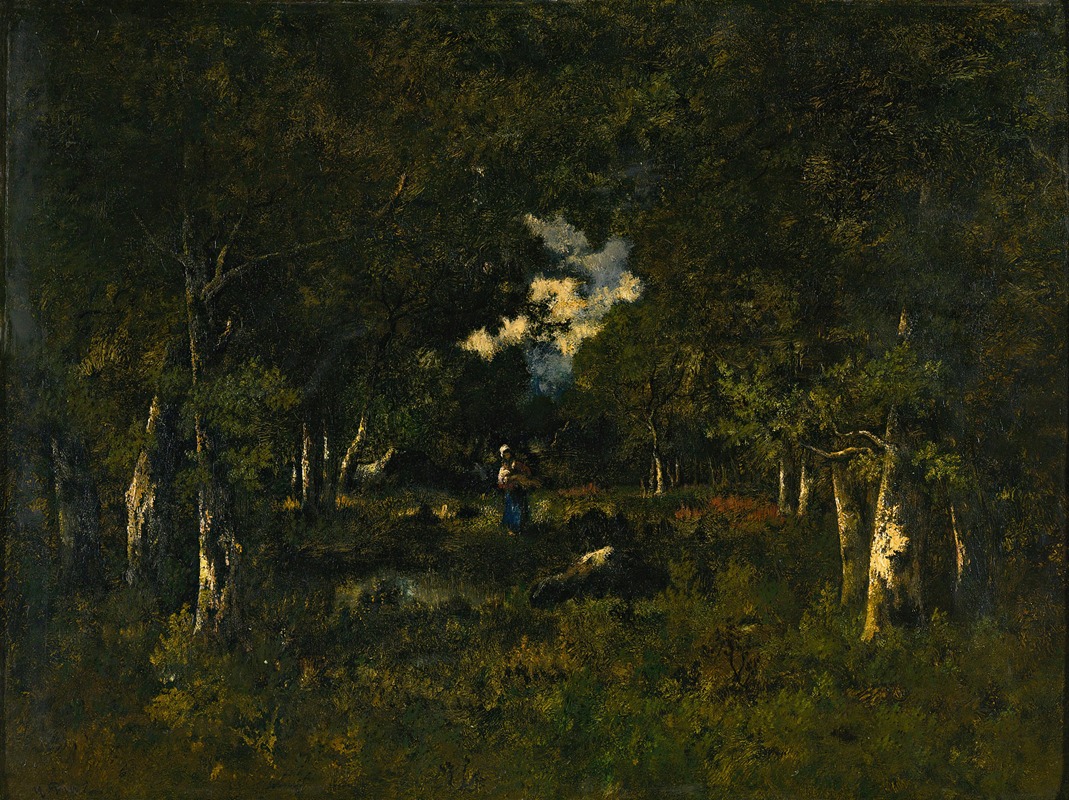
Bûcheronne Dans Une Éclaircie
A hand-painted replica of Narcisse-Virgile Diaz de La Peña’s masterpiece Bûcheronne Dans Une Éclaircie, meticulously crafted by professional artists to capture the true essence of the original. Each piece is created with museum-quality canvas and rare mineral pigments, carefully painted by experienced artists with delicate brushstrokes and rich, layered colors to perfectly recreate the texture of the original artwork. Unlike machine-printed reproductions, this hand-painted version brings the painting to life, infused with the artist’s emotions and skill in every stroke. Whether for personal collection or home decoration, it instantly elevates the artistic atmosphere of any space.
"Bûcheronne Dans Une Éclaircie" (Woodcutter in a Clearing) is a painting by the French artist Narcisse-Virgile Diaz de La Peña, created in the mid-19th century. Diaz de La Peña was a prominent figure in the Barbizon School, a movement named after the village of Barbizon near the Forest of Fontainebleau, where many artists gathered to paint nature and rural life directly from observation.
The painting depicts a solitary female woodcutter in a forest clearing, engaged in her work. The scene is bathed in a soft, diffused light that filters through the trees, creating a serene and contemplative atmosphere. The woman is shown in the midst of her labor, surrounded by the natural beauty of the forest, which is rendered with great attention to detail and a rich palette of earthy tones.
Diaz de La Peña was known for his ability to capture the play of light and shadow in his landscapes, and "Bûcheronne Dans Une Éclaircie" is a testament to this skill. The artist's use of light not only highlights the figure of the woodcutter but also brings out the textures and colors of the foliage and forest floor. This interplay of light and shadow creates a dynamic composition that draws the viewer's eye across the canvas.
The Barbizon School, to which Diaz de La Peña belonged, was instrumental in the development of plein air painting, a technique that involves painting outdoors to capture the natural light and atmosphere of a scene. This approach was a departure from the academic tradition of studio painting and was influential in the development of Impressionism later in the 19th century. Diaz de La Peña's work, including "Bûcheronne Dans Une Éclaircie," reflects this emphasis on naturalism and the direct observation of nature.
Narcisse-Virgile Diaz de La Peña was born in Bordeaux, France, in 1807. He began his artistic career as a porcelain painter before turning to landscape painting. Despite losing a leg to an infection at a young age, which required him to use a wooden leg, Diaz de La Peña became a prolific and respected artist. He exhibited regularly at the Paris Salon and was awarded the Legion of Honor in 1851.
"Bûcheronne Dans Une Éclaircie" exemplifies Diaz de La Peña's mastery of landscape painting and his ability to convey the quiet beauty of rural life. The painting is part of the collection of the Musée d'Orsay in Paris, which houses many works by artists of the Barbizon School. The museum's collection provides valuable insight into the development of 19th-century French landscape painting and the transition from Romanticism to Realism.
In summary, "Bûcheronne Dans Une Éclaircie" by Narcisse-Virgile Diaz de La Peña is a notable example of the Barbizon School's approach to landscape painting. It captures the essence of rural labor and the tranquil beauty of the natural world, rendered with the artist's characteristic attention to light and detail. The painting remains an important piece within the context of 19th-century French art and continues to be appreciated for its artistic and historical significance.





